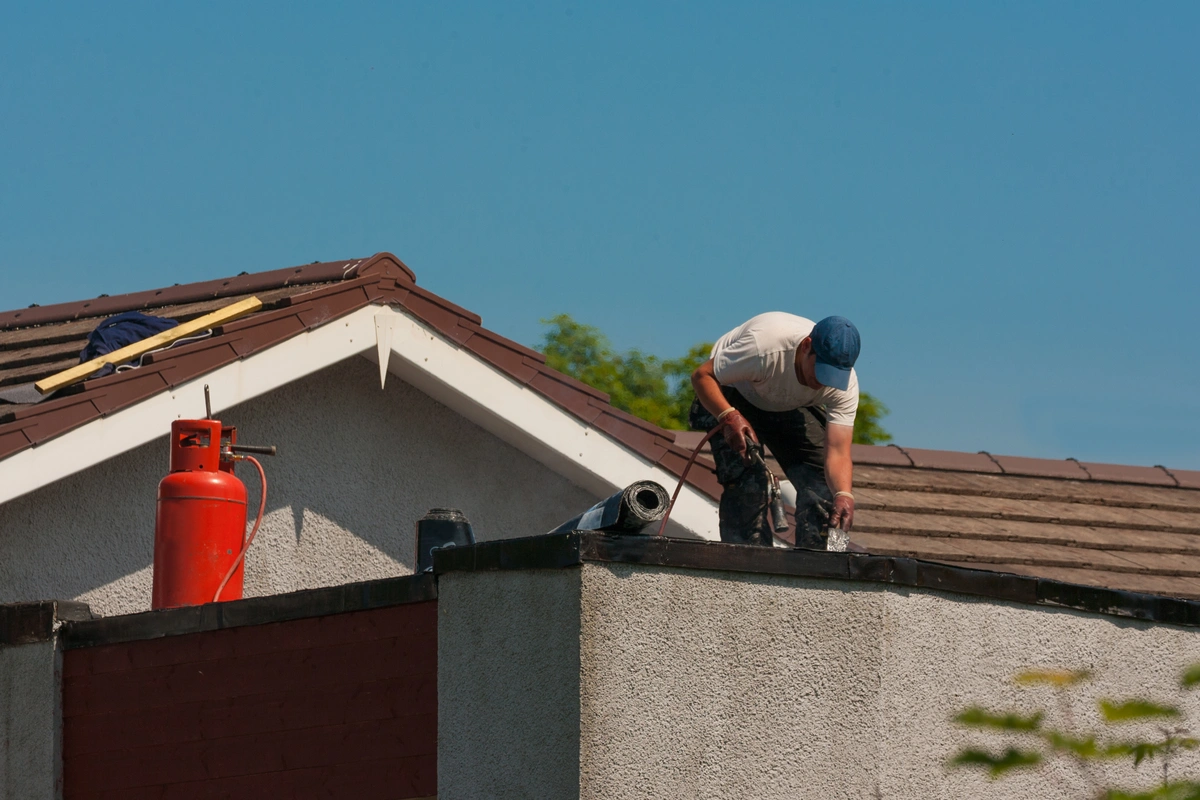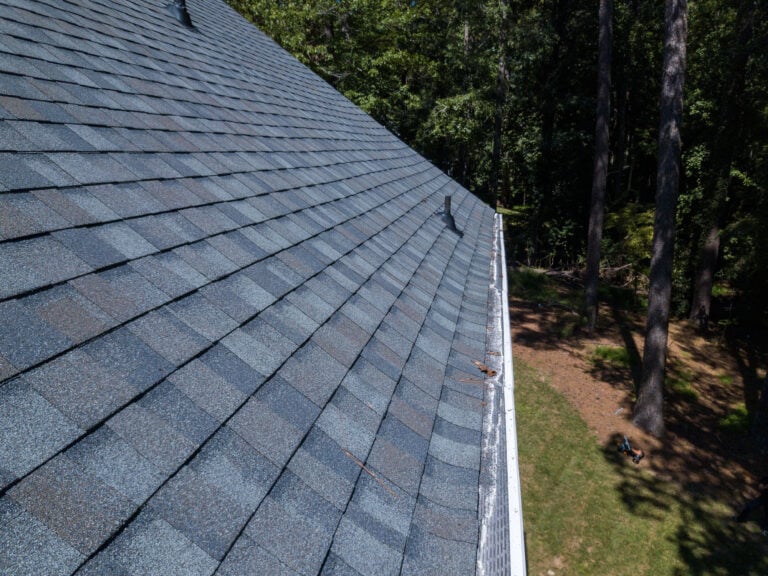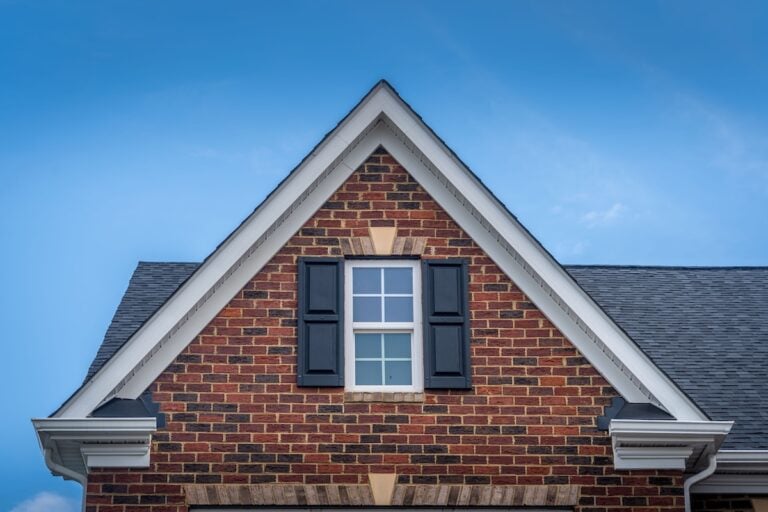Your roof plays a vital role in protecting your home from the elements, but over time, wear and tear can lead to minor leaks and damage. Fortunately, there’s no need to panic because in this guide, we’re going to delve into the three best types of roof sealants that every homeowner should have in their toolkit.
Need prompt and efficient roofing services from a local company?
Say goodbye to those pesky leaks and maintain a sturdy roof over your head! Call Palladium today, or read further to get informed on your roofing system.
Inside this blog:
- 3 key types of roof sealants
- Benefits and instructions for how to use each sealant
- When it’s the right time to call a professional
Keep reading to learn everything you need to know about roof sealant and how to choose the right one to protect your home!
The Importance of Roof Sealants

Before we jump into the specifics, let’s understand why roof sealants or a good roof coating are essential for the underlayers of your roofing system. Roof sealants serve as a protective barrier against water intrusion, which can cause extensive damage to your home’s interior. They’re especially crucial for addressing minor leaks and conducting repairs to extend the lifespan of your entire roof.
The Mighty Three: Types of Roof Sealants
Now, let’s explore the three best types of roof sealants that can help you tackle minor leaks and repairs like a pro.
1. Asphalt Roof Sealant
Overview 📓
Asphalt roof sealant, also known as asphalt roof cement, is a popular choice for sealing small cracks and gaps in asphalt shingles and flat roofs. It is a thick, viscous material that provides an effective waterproof barrier.
Benefits ✔️
- Versatility: Suitable for use on various roofing materials, including asphalt, metal, and concrete.
- Ease of Application: Asphalt sealant can be applied using a caulking gun or putty knife, making it a DIY-friendly option.
- Affordability: It is a cost-effective solution for minor roof repairs.
How to Use 🧽
Clean the area to be sealed, apply the asphalt roof sealant generously, and press it into the cracks or gaps. Smooth the sealant with a putty knife for a seamless finish.
2. Silicone Roof Sealant
Overview 📓
Silicone roof sealant is a flexible and durable choice for sealing roof leaks and preventing future damage. It is known for its longevity and ability to withstand extreme weather conditions.
Benefits ✔️
- Durability: Silicone sealant can last for many years without deteriorating, making it an excellent long-term solution.
- Flexibility: It remains flexible even in cold temperatures, ensuring that it can expand and contract with your roof’s movements.
- Weather Resistance: Highly resistant to UV rays, moisture, and temperature fluctuations.
How to Use 🧽
Clean the area to be sealed, apply the silicone sealant evenly, and allow it to cure. Silicone sealants are typically available in a cartridge for easy application with a caulking gun.
3. Polyurethane Roof Sealant
Overview 📓
Polyurethane roof sealant is a versatile and durable option for sealing leaks and performing various roof repairs. It forms a strong bond with roofing materials and provides excellent protection against water infiltration.
Benefits ✔️
- Adhesion: Polyurethane sealant adheres well to a wide range of roofing materials, including metal, wood, and concrete.
- Longevity: It has a long lifespan and can withstand exposure to harsh weather conditions.
- Waterproofing: Polyurethane is highly effective at preventing water penetration.
How to Use 🧽
Clean the area to be sealed, apply the polyurethane sealant evenly, and allow it to cure. Some polyurethane sealants require priming for better adhesion, so be sure to follow the manufacturer’s instructions.
A Quick Tip for Choosing the Right Sealant 💡
When selecting a roof sealant, consider the type of roofing material you have, the severity of the damage, and the weather conditions in your area. Additionally, always follow the manufacturer’s guidelines and safety precautions for proper application.
When to Use Roof Sealants and When to Call a Professional

While roof sealants can be effective for addressing minor leaks and repairs, there are larger projects and other situations where it’s best to seek professional help. Believe it or not, roof repairs aren’t extremely easy. Here are some guidelines to help you determine when to DIY and when to call in the experts:
DIY-Worthy Situations
- Small Leaks: If you notice a small, isolated leak in your roof, you can attempt to seal it using a suitable roof sealant.
- Minor Repairs: Cracked or damaged shingles, minor gaps, or sealant around roof penetrations (vents, chimneys) can often be handled with DIY roof sealants.
- Regular Maintenance: Using roof sealants as part of your regular roof maintenance routine can help prevent minor issues from becoming major problems.
Professional Assistance Needed
- Large or Widespread Leaks: If you have a significant or widespread roof leak, it’s best to call a professional roofer to assess and repair the damage. A real pro will fix leaks properly and ensure a long-lasting solution.
- Structural Issues: If your roof has structural damage or sagging areas, it’s crucial to have a professional inspect and repair it to ensure safety.
- Roof Replacement: When your roof has reached the end of its lifespan or sustained extensive damage, it’s time to consider a roof replacement, which should be done by professionals.
Remember that safety should always be a priority when working on your roof. If you’re unsure about the extent of the damage or how to proceed, it’s safer to consult with a roofing professional who can provide expert guidance.
6 Maintenance Tips for a Healthy Roof
To keep your roof in top condition and minimize the need for repairs, here are some essential maintenance tips:
1. Regular Cleaning 🧹
Routinely clean your roof of debris, leaves, and branches to prevent clogs and water buildup. Accumulated debris can block drainage systems, leading to ponding water and potential leaks.
2. Moss and Algae Control 🌿
Remove moss or algae growth using a mixture of water and bleach. Moss and algae can damage roofing materials over time and should be promptly removed.
3. Trim Overhanging Branches 🌳
Keep tree branches trimmed to prevent them from scraping or damaging your roof during windy conditions. Overhanging branches can also deposit leaves and debris on your roof.
4. Attic Ventilation 💨
Ensure your attic has proper ventilation to prevent heat buildup, which can damage your shingles. Proper ventilation helps regulate temperature and moisture levels in your attic.
5. Flashings and Seals Check 🔍
Check the flashings around roof penetrations such as chimneys, vents, skylights, and HVAC units. Ensure they are sealed correctly to prevent water infiltration.
6. Roof Penetration Maintenance 🔧
Maintain roof penetrations regularly, checking for any loose or damaged components. Repair or replace as needed to maintain the integrity of your roof.
By following these maintenance tips and promptly addressing minor issues with suitable roof sealants, you can extend the lifespan of your roof and enjoy a well-protected home for years to come.
Protect Your Home With Roof Sealant
Roof sealants are valuable tools that every homeowner should have on hand for addressing minor roof leaks and conducting repairs. Whether you opt for asphalt, silicone, or polyurethane sealants, choosing the right one for your specific needs is essential. Additionally, knowing when to DIY and when to seek professional assistance ensures the longevity and effectiveness of your roof maintenance efforts.
Remember, a well-maintained roof not only protects your home but also adds value and curb appeal. So, equip yourself with the knowledge and materials needed to keep your roof in excellent condition, and you’ll enjoy peace of mind under a sturdy roof for years to come.
Contact our expert team of roofers at Palladium Roofing today and experience top-notch workmanship and speedy turnaround times. Let’s keep your home standing strong with a resilient and beautiful roof!





